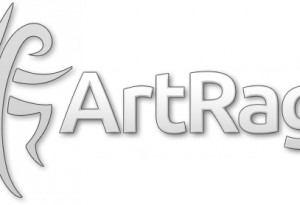

Even if the brush size will minimize (as you are applying less pressure) this is a fun tool to blend with. Something I like about the Airbrush is that it automatically blends when you apply less pressure onto your pen (meaning that its transparency lowers). I like to blend while I am coloring a certain object, meaning that I skip the base coloring-concept and jump to the blending instead. The way I blend is a little trickier than the way I color, because I believe that it takes practice and experience with your pen. A pressure sensitive pen can really help here, because you can automatically achieve coloring at would only be possible at 1% without a pressure sensitive pen. However, I usually stick around with the Airbrush set at 10% (A larger area will require a greater tool size though). And, again, the ideal brush size varies depending on the object you want to color. I use the Airbrush for, both, coloring and blending. HINT: Take advantage of your pressure sensitive pen! While I prefer to keep my lineart size more or less equal (I do vary it sometimes), I’ve seen pieces where the lineart changes in width, and it makes it often a lot more interesting to look at, and can add dynamic elements. It becomes really powerful at higher settings. I recommend you don’t set this tool over 20% though. However, if you can always enable ArtRage to smoothen lineart for you. “Glätten” (look at the image above) is the setting that does this for you. I used to do that when I first used ArtRage, but discovered that it is just so much easier to draw when this is disabled (and I tend to like lineart that is not perfect). From what I’ve seen in speedpaints, many people take advantage of the tool that smoothens their lineart. I don’t let the program straighten my lineart automatically. My Tintengriffel settings (that I rarely ever change): Your tablet will not break when you apply lots of pressure. I usually keep the pressure on my pen soft. When you use the 5% brush at different pressures with your tablet, you will end up with something like this: If you do not have a tablet, I recommend you keep your brush smaller than 3%. However, this brush size will only work efficiently if you have a tablet that is pressure sensitive. So I prefer to use the Tintengriffel with 5% of it’s size. I usually stick around with canvases that do not exceed 2000 pixels in height or length. Depending on your canvas size, the ideal size for this tool will vary. But a few days ago, I jumped back to the Tintengriffel, because the lineart turns out cleaner with this tool. I used to use the pencil (encircled red) instead of the “Tintengriffel” for lineart. The two brushes encircled with a black line are the brushes I use most frequently. I have the German version of ArtRage 4 (and will address the tools by their German name) A WIP of a drawing I’m working on looks like this:
Artrage transparent background full#
(Continue to read to see the full tutorial)

The following will just explain how I use it, since a lot of you seem to be interested. I’m not showing you the right way, because there is no right way.
Artrage transparent background how to#
To start off with: there are various different ways of how to use ArtRage. Hello! Let me show you how I use ArtRage! :)


 0 kommentar(er)
0 kommentar(er)
